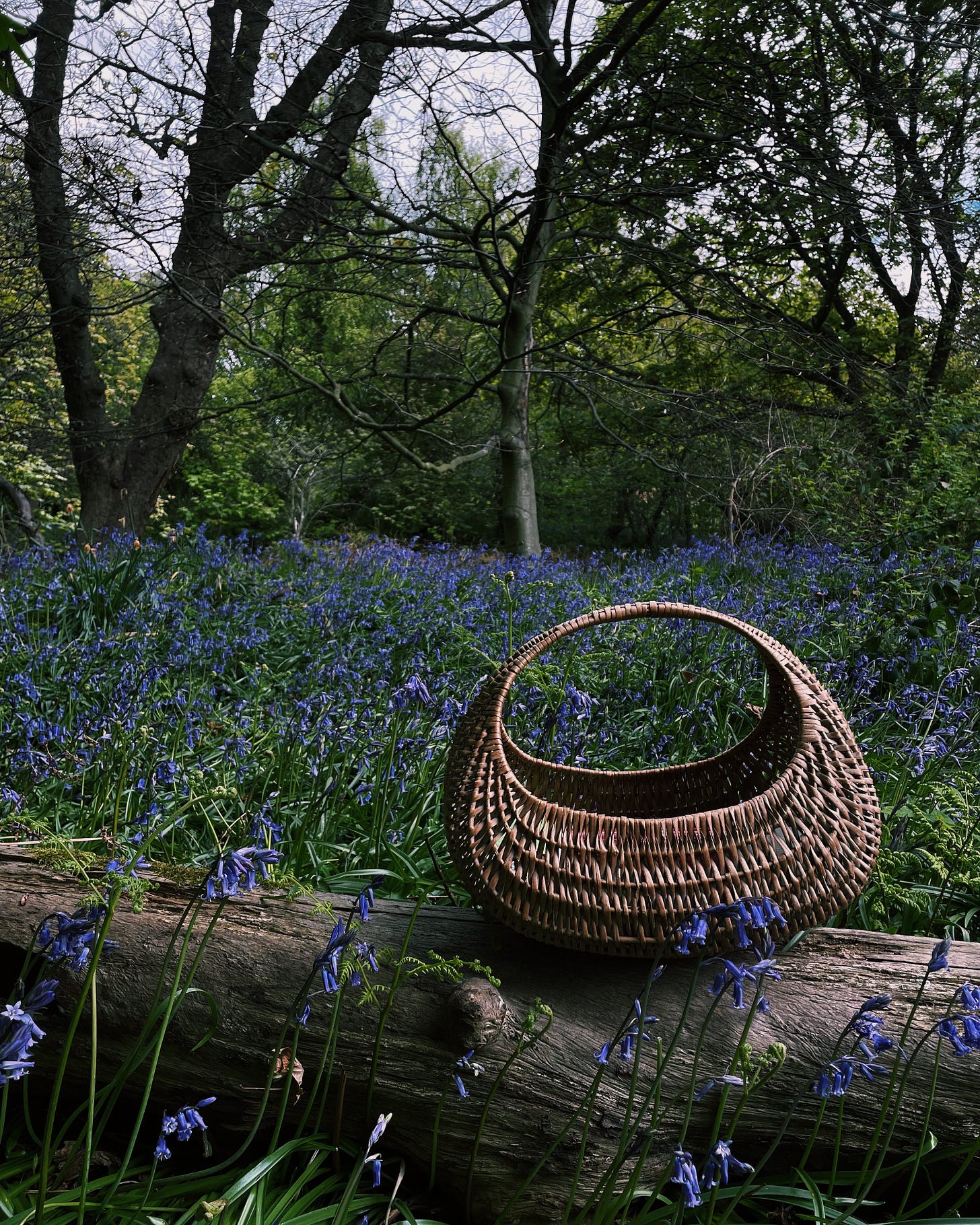An Ode to the Bluebell
“O, that lone flower recalled to me
My happy childhood’s hours
When bluebells seemed like fairy gifts
A prize among the flowers,
Those sunny days of merriment
When heart and soul were free,
And when I dwelt with kindred hearts
That loved and cared for me.
I had not then mid heartless crowds
To spend a thankless life
In seeking after others’ weal
With anxious toil and strife.
Sad wanderer, weep those blissful times
That never may return!
The lovely floweret seemed to say,
And thus it made me mourn.”
Anne Brontë
Bluebells are synonymous with the season of Beltane in early May, which marks the beginning of the Summer months in the Celtic Wheel of the Year. The flowers are native to western Europe and can be found in ancient woodland - indeed, they have been for thousands of years. They are unmistakable: bright, bell-shaped and a distinctive bluey-purple, signifying rare and special woodland. They’re also one of nature’s ephemeral joys that, as Anne Brontë reminds us, mark the passage of time - all the more beautiful for their brief season.
Bluebells are actually herbs, and each native “bell” has six flowers with curled tips that droop to one side of the stem. In the language of flowers, they’re said to represent everlasting love, constancy and truth, while their magical appearance has seen bluebells long associated with fairies in folklore. Bluebell woods were believed to be enchanted by fairies – in many cases, rather sinisterly, to trap humans. One story goes that if you pick a bluebell, you will be led astray by fairies and wander lost for all time. Another even says that if you hear a bluebell ringing you will be visited by an evil fairy and will die soon afterwards. So tread with care…
Speaking of which, destruction of habitat, illegal collection of wild bulbs, hybridisation with Spanish bluebells (the taller, more robust bluebell has flowers all around the stem rather than drooping to one side) and even damage from trampling – causing the leaves to lose their ability to photosynthesise – mean that bluebells are under threat. The wildflowers are protected under the Wildlife and Countryside Act (1981): landowners and visitors are banned from removing bluebells to sell. Be sure to step carefully if you go to see the bluebells and stick to marked pathways. Each year the Woodland Trust holds a “Big Bluebell Watch” to track the progress of the plant – and you can find out more about the top places to spot bluebells here.
It’s become something of an annual tradition in our house to head to the bluebell woods and one I look forward to each May, safe in the knowledge that Spring is well and truly upon us, with the promise of Summer days on their way. Here in Scotland we can be several weeks behind the growing season in the South, so the bluebells were still in the process of emerging when we visited last week - but already looked resplendent in the dappled Spring sunshine. We wandered for several happy hours, snapping as we went and stopping for a restorative flask of tea. I’m hoping to hunt for more bluebells this weekend before they disappear for another year; there’s something about getting back to nature, especially in Springtime, that’s so good for the soul.





